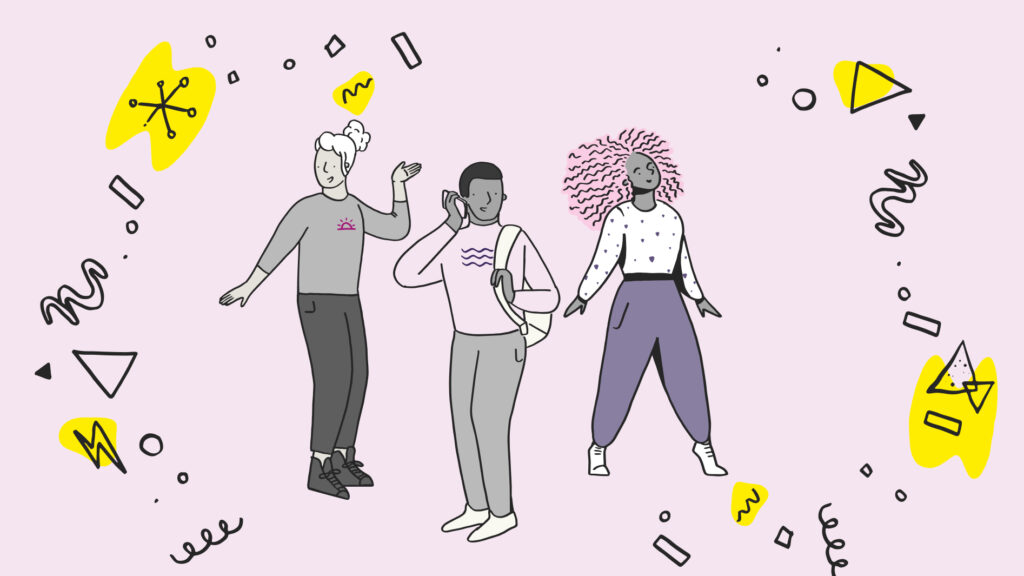At Nomensa we love conducting user research and understanding what makes users tick. Our experienced teams plan and deliver research that gives our clients rich insights that can be used to enhance customer experience. We know that research is only useful if it translates to practical, actionable recommendations.
Observing users in their natural environment is called ethnographic research. It gives us a window into how customers think and behave in the real world. We can investigate the entire setting rather than the product or service in isolation. This type of research can provide deeper insights into user behaviours and attitudes within specific contexts.
We were excited to work with Nissan recently on some ethnographic research.
The challenge
Nissan wanted to get a better understanding of how customers experience test driving electric vehicles (EVs), and how this compares to test driving conventional cars.
Our task was to help Nissan get to the bottom of customers pre-conceived notions, expectations and fears, so they could learn and adapt their test driving services for the launch of their brand new EV – the Nissan Ariya.
Nomensa and Nissan organised a series of test drives with people who were considering the purchase of their first EV.
Our research was carried out during a time when COVID-19 health and safety policies were still in place, so our researchers could not be physically present inside the car. Luckily we’re not afraid to think outside the box at Nomensa, as this was a situation where we needed an innovative solution.

Our approach
We used a combination of research techniques to get a rich understanding of the test drive experience, from start to finish.
We invited participants to test drive appointments at a local Nissan dealership, whose staff were onboarded and trained on the research process.
Interactions before the test drive
We directly observed how the participant and dealer initially interacted before the test drive. We noted any questions that the participant asked, and how the dealer introduced them to the vehicle.

During the test drive
As the Ariya had not yet been launched, the test drive was in Nissan’s other electric vehicle, the Nissan Leaf. Our researchers couldn’t be in the car due to COVID-19 restrictions, so we came up with a way remotely observe the test drive. This was important to help us understand how the participants used the vehicle and any common questions or issues that came up.
We installed two recording devices inside the Nissan Leaf, and tested out our equipment before the test drives, to make sure everything was working smoothly.
1. Wide angle cockpit view – GoPro, saved locally
We used this view to check any interactions between the driver, the dealer and the vehicle. This also provided a video recording that was not affected by reception instabilities.
2. Driver view – iPhone, live streaming
This camera was used to observe the session as it happened. The recording was also live streamed to Nissan, so that they could watch the test drive.
![]()
Interactions after the test drive
We directly observed any questions that the participant had immediately after their test drive.
Analysis
After the test drives, we analysed findings for each participant. We identified areas of individual interest and added these to our discussion guide for the remote interviews.
Interviews
We held individual interviews with each participant a few days after the test drives, asking them questions about their experience.

The value of our research
By using a combination of research methods tailored to Nissan’s requirements, we were able to produce some rich insights about the test drive experience.
Our insights helped to:
- Validate some of Nissan’s assumptions
- Highlight some new areas of opportunity for Nissan to adapt their future EV test drives
Improvements made using these insights should give new potential buyers of electronic vehicles more confidence, and help alleviate their anxieties when trying to make a switch to a more environmentally conscious vehicle.
Creative research solutions
The pandemic forced many companies to confine their user research to remote approaches. But as we are easing out of the pandemic, it is a good reminder that products and services are experienced in the real world – and user research can be carried out anywhere. At Nomensa, we can help you find creative research solutions.
Research methods can include observation, interviews, surveys, filming and photography. There are even remote techniques such as diary studies which don’t require a researcher to be physically present. These are all approaches that Nomensa has experience in delivering.
Get in touch with our team to unlock the potential of user research.
Can we help you?
If reading this post has inspired you to improve the experience you deliver to users, we’d love to hear from you!
We drive commercial value for our clients by creating experiences that engage and delight the people they touch.
Email us:
hello@nomensa.com
Call us:
+44 (0) 117 929 7333




